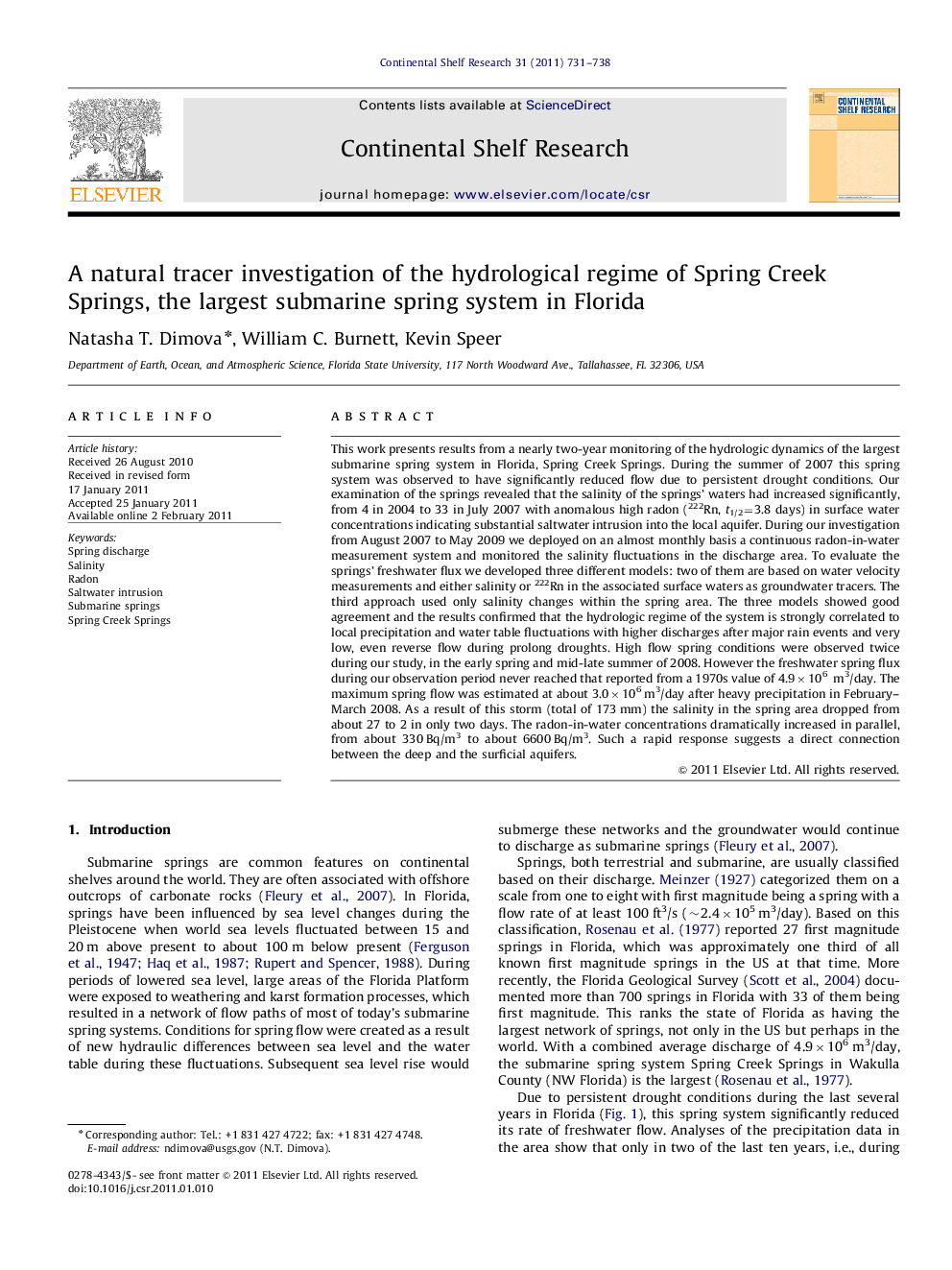| کد مقاله | کد نشریه | سال انتشار | مقاله انگلیسی | نسخه تمام متن |
|---|---|---|---|---|
| 4532674 | 1325139 | 2011 | 8 صفحه PDF | دانلود رایگان |

This work presents results from a nearly two-year monitoring of the hydrologic dynamics of the largest submarine spring system in Florida, Spring Creek Springs. During the summer of 2007 this spring system was observed to have significantly reduced flow due to persistent drought conditions. Our examination of the springs revealed that the salinity of the springs' waters had increased significantly, from 4 in 2004 to 33 in July 2007 with anomalous high radon (222Rn, t1/2=3.8 days) in surface water concentrations indicating substantial saltwater intrusion into the local aquifer. During our investigation from August 2007 to May 2009 we deployed on an almost monthly basis a continuous radon-in-water measurement system and monitored the salinity fluctuations in the discharge area. To evaluate the springs' freshwater flux we developed three different models: two of them are based on water velocity measurements and either salinity or 222Rn in the associated surface waters as groundwater tracers. The third approach used only salinity changes within the spring area. The three models showed good agreement and the results confirmed that the hydrologic regime of the system is strongly correlated to local precipitation and water table fluctuations with higher discharges after major rain events and very low, even reverse flow during prolong droughts. High flow spring conditions were observed twice during our study, in the early spring and mid-late summer of 2008. However the freshwater spring flux during our observation period never reached that reported from a 1970s value of 4.9×106 m3/day. The maximum spring flow was estimated at about 3.0×106 m3/day after heavy precipitation in February–March 2008. As a result of this storm (total of 173 mm) the salinity in the spring area dropped from about 27 to 2 in only two days. The radon-in-water concentrations dramatically increased in parallel, from about 330 Bq/m3 to about 6600 Bq/m3. Such a rapid response suggests a direct connection between the deep and the surficial aquifers.
Research highlights
► In this study we monitor the hydrologic regime of one of the largest submarine spring systems in Florida.
► We found that the spring system response very quickly to precipitation changes in the recharge area. The rapid response in the coastal waters suggests that the surficial aquifer is one of the major contributors for SGD in the area.
► Substantial saltwater intrusion was evident during periods of prolong drought.
► The maximum calculated flow never reached the reported historical freshwater discharge during our observations.
Journal: Continental Shelf Research - Volume 31, Issue 6, 15 April 2011, Pages 731–738